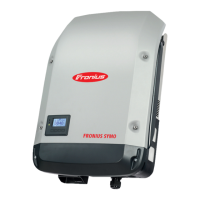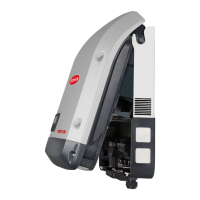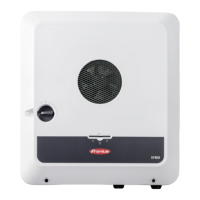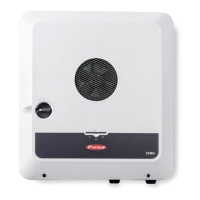22
Note! The solar modules connected to the inverter must comply with the IEC 61730 Class
A standard.
Note! When photovoltaic modules are exposed to light, they supply current to the inverter.
General com-
ments regarding
solar modules
To enable suitable solar modules to be chosen and to use the inverter as efficiently as pos-
sible, it is important to bear the following points in mind:
- If insolation is constant and the temperature is falling, the open circuit voltage of the
solar modules will increase. The open circuit voltage must not exceed the maximum
permissible system voltage. If the open circuit voltage exceeds the specified values,
the inverter will be destroyed and no warranty claims will be entertained.
- The temperature coefficients on the solar modules data sheet must be observed.
- More exact values for dimensioning the solar modules can be provided by suitable cal-
culation programs, like the Fronius Solar.configurator (which can be downloaded from
http://www.fronius.com).
Note! Before connecting up the solar modules, check that the voltage for the solar modules
specified by the manufacturer corresponds to the actual measured voltage.
Note! The solar modules connected to the
inverter must comply with the IEC 61730
Class A standard.
Note! Solar module strings must not be
grounded.
Note! When solar modules are exposed to
light, they supply DC voltage to the inverter.
The cable cross section must be between
2.5 mm
2
and 10 mm
2
(AWG 13 - 7).
DC terminals
Max. cross-section of each DC cable:
16 mm²
Min. cross-section of each DC cable:
2.5 mm²
The DC cables can be connected to the DC
terminals without ferrules.

